
What is the meniscus?
The meniscus in the knee is a crescent-shaped wedge of fibrocartilage that basically acts as a cushion between the shinbone (tibia) and thighbone (femur). Each knee has two menisci.
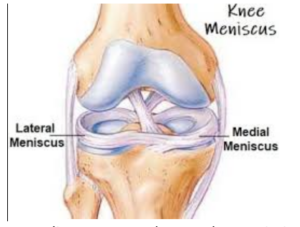
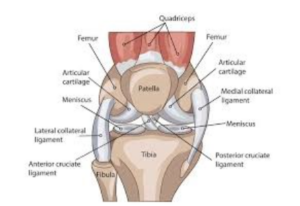
According to Fox et al 2012, the menisci are vital for the normal function and long-term health of the knee joint. The menisci serve important functions including: increasing stability for femorotibial articulation, distributing axial load, absorbing shock, and providing lubrication and nutrition to the knee joint.
We don’t want to overload YOU with too much anatomy though it is important to note the vascular supply to the menisci as it may significantly affect injury healing and may guide treatment options too! The menisci are considered to have red, red-white and white zones. The red zone or peripheral 10% to 30% of the medial meniscus border and 10% to 25% of the lateral meniscus are relatively well vascularized – so injury in this area likely has better healing potential. The red-white zone is the crossover area between zones. And the white zone or remaining portion of each meniscus (65% to 75%) receives nourishment from synovial fluid via diffusion or mechanical pumping – so injury in this area likely has decreased healing potential.
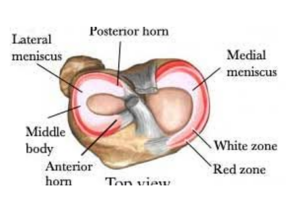
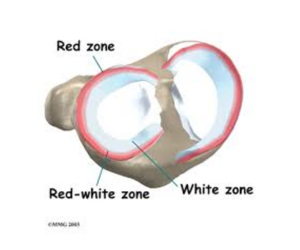
How does the meniscus usually get injured?
Most meniscal injuries occur as a result of twisting the knee while the foot is planted on the ground. Injury may occur due to an excessive force applied to a ‘normal’ meniscus or a normal force acting on a degenerative meniscus. Meniscus injury may also be associated with other knee ligamentous injuries, typically the ACL (anterior cruciate ligament) and the MCL (medial collateral ligament). There are different types of tears that can occur in the meniscus such as radial, horizontal, flap, complex, and bucket-handle. The type and complexity of the tear and if it is combined with injury to other knee structures will guide your recommended treatment plan.
According to Luvsannyam et al (2022) the prevalence of meniscus injuries is reported as 12% to 14%, with an approximate incidence of 61 cases in every 100000 people. Acute trauma-related tears are more prevalent in active young populations and those engaging in sports activities. In older or less active adults, degenerative meniscus tears are more common, with the peak onset age in men being 41 to 50 years, while in females, it is 61 to 70. The approximate number of cases per year is 850000 and the associated orthopaedic surgeries to correct the meniscus tears are between 10% and 20%.
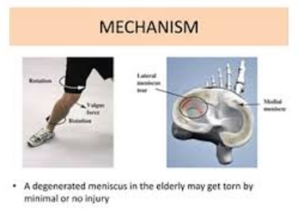

What might a meniscus injury feel like? You may experience:
How would a meniscus injury be diagnosed and what treatment should you have?
Your physio or athletic therapist will take a history and do some tests on your knee which may indicate meniscus injury. Depending on their assessment, they may recommend conservative management like hands on therapy and rehabilitation exercises. Or they may recommend that you begin with conservative management, whilst you are referred for a MRI scan. Depending on the scan result, you may then continue with conservative management and/or you may be referred to a knee specialist for their opinion on whether a surgical procedure may be recommended for you.
Ref: